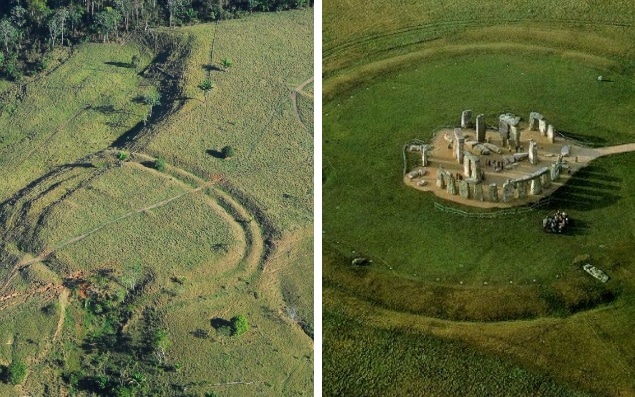Fantastic World.
Lots of strange news has been coming out of Egypt lately. First, some scientists, using infrared and modulated thermography (don’t ask me what that means) have been peering through the rocks of the pyramids of Giza, looking for hidden hallways and empty chambers. The Scan Pyramids project, which was launched in October of last year is looking for some tantalizing things. Looking for areas with poor insulation, cracks, and openings in the seemingly smooth-sided pyramids, the project leaders hope to find cavities and chambers beneath the rocks.
Lost treasure chambers? A long-forgotten library of priceless books? Who knows? But it will take the rest of this year for Scan Pyramids to work it out..
However, while those scientists use drones to take images of the pyramids, other Egyptologists surmise they may have found the tomb of the fabled Nefertiti, the queen of Akhenaten. He was the pharaoh who became a heretic when he proposed a religion based on a single god—the Aten, or sun disk. Almost nothing is known of what became of Akhenaten and Nefertiti after their fall from grace, but many Egyptologists believe that Nefertiti was a co-regent with her king during his later years of rule. When he died, she might have become the mysterious Smenkhare, a pharaoh named in the Egyptian histories, but one who left no royal tomb.
Nefertiti, often called the most beautiful woman in history, also seemed to disappear into nowhere. Her tomb and body has never been found.
Now, Egyptologist Nicholas Reeves believes that her tomb is behind that of Tutankhamen, the famous boy king’s. When Howard Carter found “King Tut” in 1922, the opening of the tomb was the wonder of the world. Here was the burial place of a boy of about 19, who had only been on the throne shortly. The tomb appeared to be hastily put together with many items recycled from other burials.
Tut was the son of Akhenaten, but no one is sure who his mother was. It could have been Nefertiti or it could have been Kiya, a minor wife of Akhenaten. The excitement comes into the story when Reeves identified what he called two doorways or entrances behind the current walls of Tut’s burial chamber. They may lead to just more storage chambers or to another royal tomb.
Reeves builds a case that Nefertiti was Tut’s mother, that she was interred first in the rock-cut tomb. Then, when Tut died so suddenly, room was made at the front of Nefertiti’s tomb for the boy’s remains. So, if someone were to drill behind one of those doors, there just discover an astonishingly lavish tomb dedicated to the royal queen.
Reeves peppers his theory with a lot of details that people other than Egyptologists can’t follow, such as saying Tut’s tomb is in a corridor that turns right, rather than left, indicating it was originally for a queen. He also says that items in Tut’s tomb were not designed for him, and that the famous gold mask that lies in the Cairo Egyptian History Museum does not even resemble the boy king at all.
No one will really know if Nefertiti is behind he door, but former antiquities minister Zahi Hawass, who has no more power in Egypt, disregards the whole theory. He says no one should be drilling on that priceless tomb door. That’s because he thinks he already found Nefertiti’s body (which was broadcast on a cable television program and proved to be most unconvincing.)
So, keep tuned. There are power upheavals in Egypt everyday, and no one knows who might authorize drilling behind Tut’s tomb. However, as geologist and Egyptology fan Robert Schoch, Ph.D., reports, the tourism industry is in such bad shape that it would be easy to understand if Egypt would take the gamble to take a peek behind the wall.
The world is waiting for Nefertiti to arise.
 rainforests at that time were supposed to be “pristine,” or untouched by human mechanics. Obviously, these forests were encroached upon, although not despoiled.
rainforests at that time were supposed to be “pristine,” or untouched by human mechanics. Obviously, these forests were encroached upon, although not despoiled.
